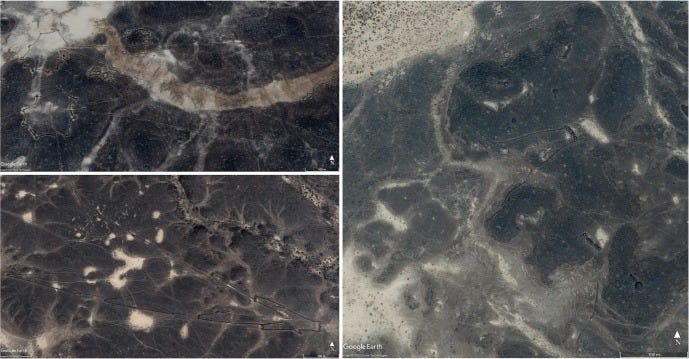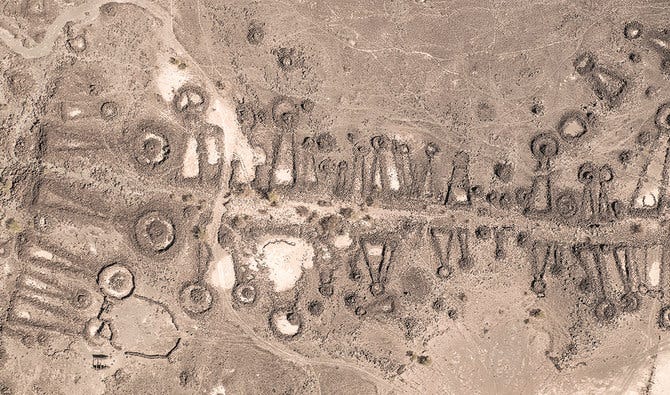Desert-Kite: an ancient human mass-killing hunting phenomenon
Mass-kill hunting traps have been discovered, and scientists are still studying the effect on animal ecology and human society.
According to the researchers, the ancient human-built convergently formed stone structure was discovered between northern and western Central Asia. Due to its kite-like shape, this feature is known as "desert kite" and has found in Yemen and the Negev/Sinai; it consists of two converging walls that converge at a circular enclosure or pit at the apex. Some objects have been discovered in Central Arabia that does not meet the traditional kite standards, and archaeologists have dubbed them "Psuedo-kite."According to research, the desert kite was created for mass kill-hunting the animal. Kites were used by indigenous peoples in North America to monitor the movement of herd animals and lure them into enclosures for hunting.
According to researchers, mass-kill hunting using desert kites was responsible for the extinction of various animals like ostriches, equid birds, and hartebeests in Southwest Asia during the late Quaternary period. The high bone density found near concentrations of desert kites in Syria revealed extensive “unsustainable hunting practices.”

The desert kite was used for mass kill hunting from the late Neolithic to a few hundred years ago, for example, in Arabia during the last 10,000 years and in Armenia between 3,200 and 1,500 years ago.
The morphology and characteristics of the kites are highly regionalized. The morphology differed even within a single field, with distinct dominant trends. For example, in Harrat-al-sham, desert kites have a star-shaped feature, whereas in HarratKhyabar, Saudi Arabia, lava fields have barbs that protrude the converging wall instead of a distal enclosure. Small and isolated kites were discovered in the Negev/Sinai, with walls that converged into a simple pit/enclosure.

There was a decrease in wild animals and a rise in domestic animals, according to the writer. They proposed a variety of explanations for the disappearance of wild animals. One of them may be large-scale shooting and intensive pastrolism. Furthermore, the creation of pastrolism could alter the behaviour of wild animals, making the use of desert kites an effective approach. Wild animal extinction occurred during the Holocene epoch, according to the archaeologist, resulting in domestic animal overgrazing. However, there is a significant difference in our understanding of how desert kite kill-hunting affects animal ecology and need to study.
References:
Barge, O., Brochier, J. É., Régagnon, E., Chambrade, M. L., & Crassard, R. (2015). Unity and diversity of the kite phenomenon: a comparative study between Jordan, Armenia and Kazakhstan. Arabian archaeology and epigraphy, 26(2), 144-161. (https://doi.org/10.1016/j.jasrep.2021.102995)
Groucutt, H. S., & Carleton, W. C. (2021). Mass-kill hunting and Late Quaternary ecology: New insights into the ‘desert kite’phenomenon in Arabia. Journal of Archaeological Science: Reports, 37, 102995. (https://doi.org/10.1016/j.jasrep.2021.102995)
Helms, S., & Betts, A. (1987). The Desert" Kites" of the Badiyat Esh-Sham and North Arabia. Paléorient, 41-67. (https://www.jstor.org/stable/41492233?seq=1)


